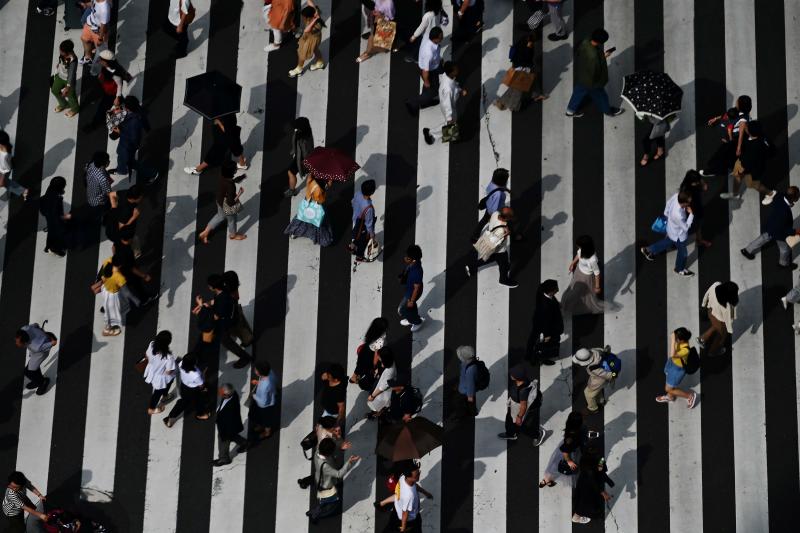Tokyo gets more crowded as Japan hollows out
Sign up now: Get insights on Asia's fast-moving developments

As Japan's rural regions empty out, it is getting more crowded in Tokyo, where the number of Japanese citizens grew the most - to 13.2 million.
PHOTO: AFP
Follow topic:
TOKYO - The number of Japanese citizens fell for the 10th straight year to 124.8 million as of Jan 1, government data showed on Wednesday (July 10), proving yet again that there is no magic bullet to resolving Japan's dire ageing crisis.
The 0.35 per cent fall was also the fastest-ever decline.
But as Japan's rural regions empty out, it is getting more crowded in Tokyo, where the number of Japanese citizens grew the most - to 13.2 million.
This is a rise of 0.56 per cent, or 73,205 people, from January last year, in what marks the 23rd straight year of population increase in the Japanese capital, statistics from the Ministry of Internal Affairs and Communications showed.
Concurrently, the number of foreign residents nationwide rose to 2.67 million, comprising 2.09 per cent of the total population of 127.4 million.
This marked the first time that the foreign resident population has crossed the 2 per cent threshold, with all 47 prefectures recording an increase.
Tokyo has the largest foreign resident population of 550,000.
Aichi, where the city of Nagoya is located, has 250,000, while Osaka has 230,000.
At the heart of the decline in the number of Japanese citizens is the nation's fertility issues, which have been blamed on a workplace culture that has long forced women to choose between family and career.
While this is changing, Professor Emeritus Akihiko Matsutani of the National Graduate Institute of Policy Studies pointed to a more fundamental structural issue.
"The number of women aged between 25 and 39 has fallen drastically by 21 per cent between 2008 and 2018," he told public broadcaster NHK.
"Due to this overwhelming decline, it will not be easy to reverse the trend of rapidly falling births and an ageing population simply by human effort," he said.
The Health, Labour and Welfare Ministry said last month that just 918,397 babies were born last year, the third year in a row that the number of newborns fell below the one million mark.
This has exacerbated a stark population crisis, which last year saw citizen numbers falling by 433,239, or 0.35 per cent.
The number of Japanese citizens fell in all but five of Japan's 47 prefectures.
Besides Tokyo, the prefectures of Chiba, Kanagawa and Saitama, located to the east, south and north of the capital respectively, registered increases in the number of Japanese citizens. The fifth is Okinawa, which has the country's highest fertility rate of 1.89.
Hokkaido logged the largest numerical fall of 39,461 people to 5.27 million, or a decline of 0.74 per cent.
Ten prefectures saw population declines of more than 1 per cent, led by the north-eastern prefectures of Akita (-1.48 per cent), Aomori (-1.28 per cent) and Iwate (-1.17 per cent).

